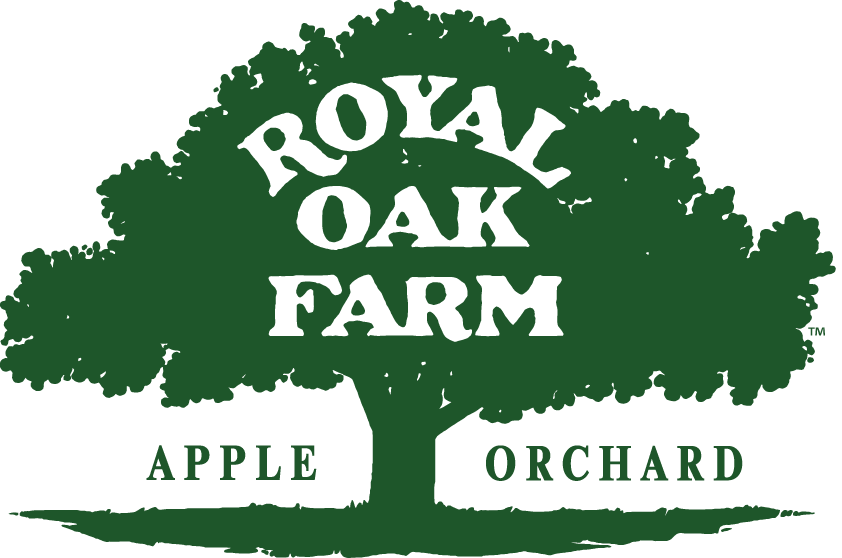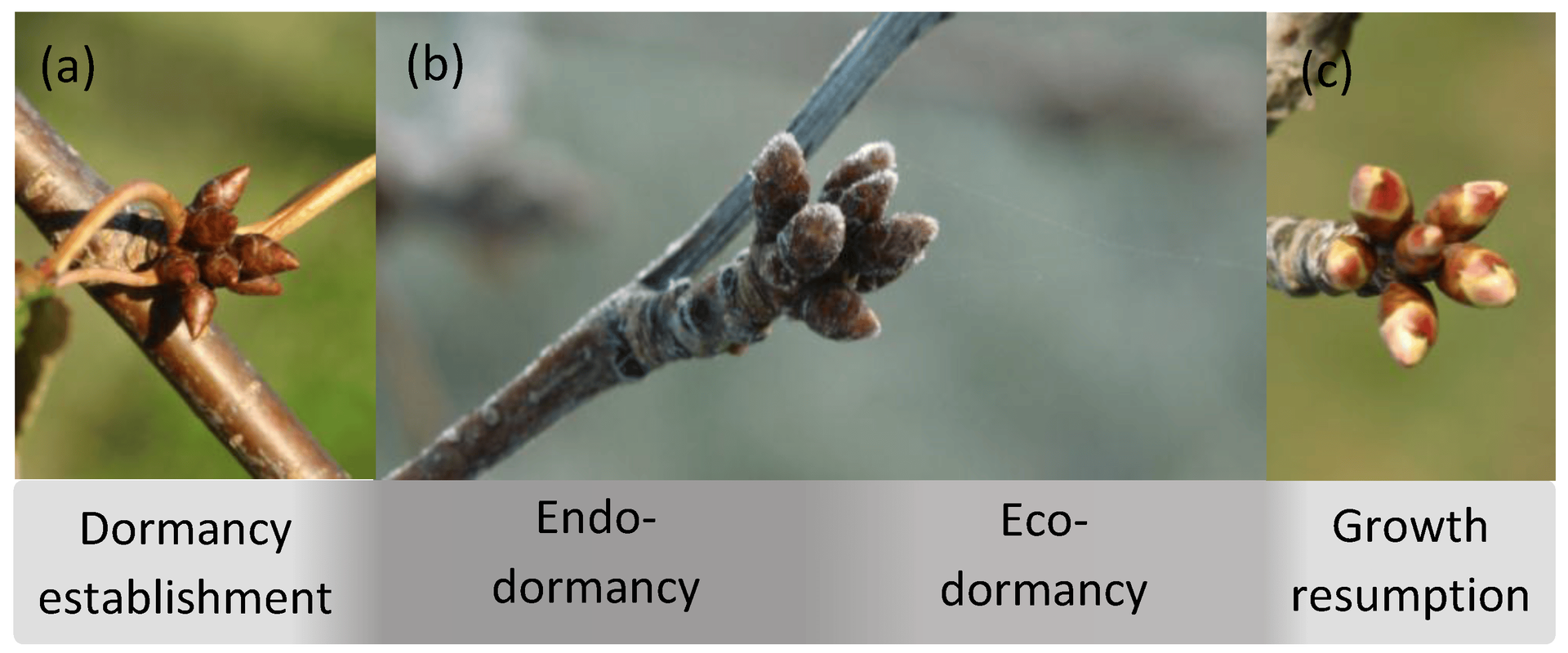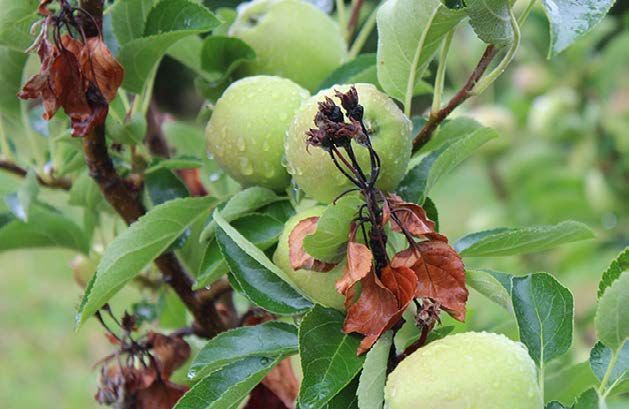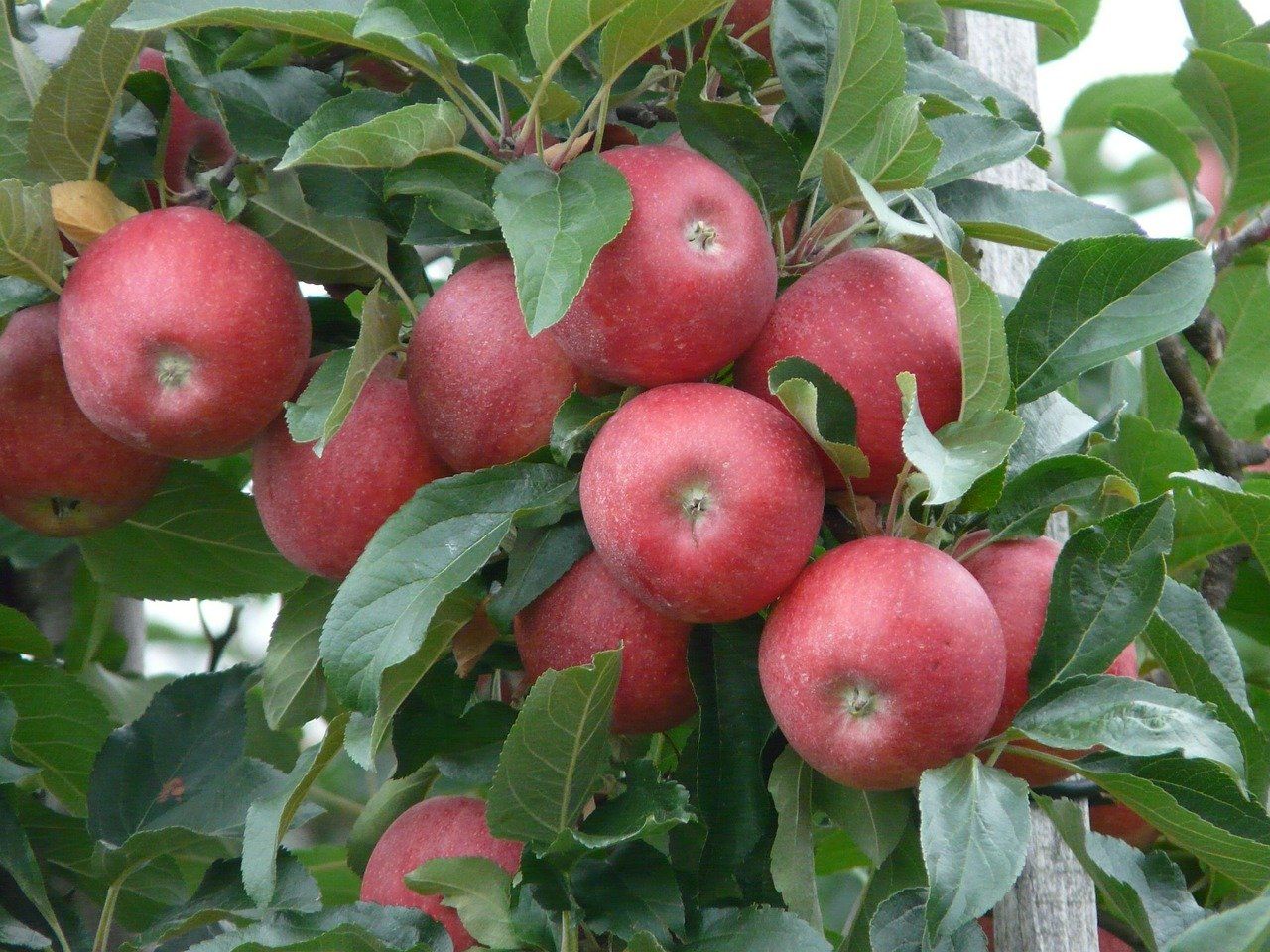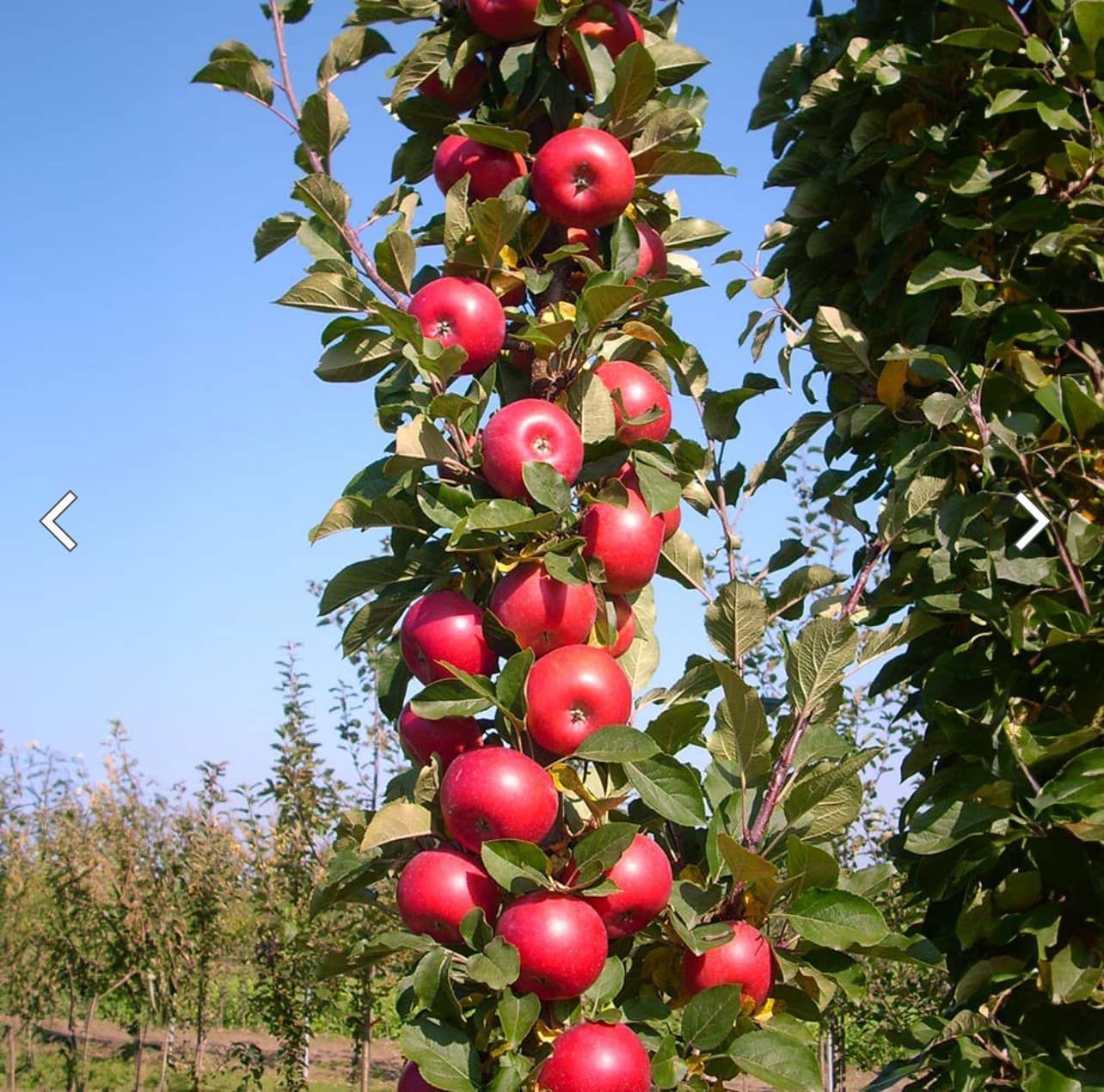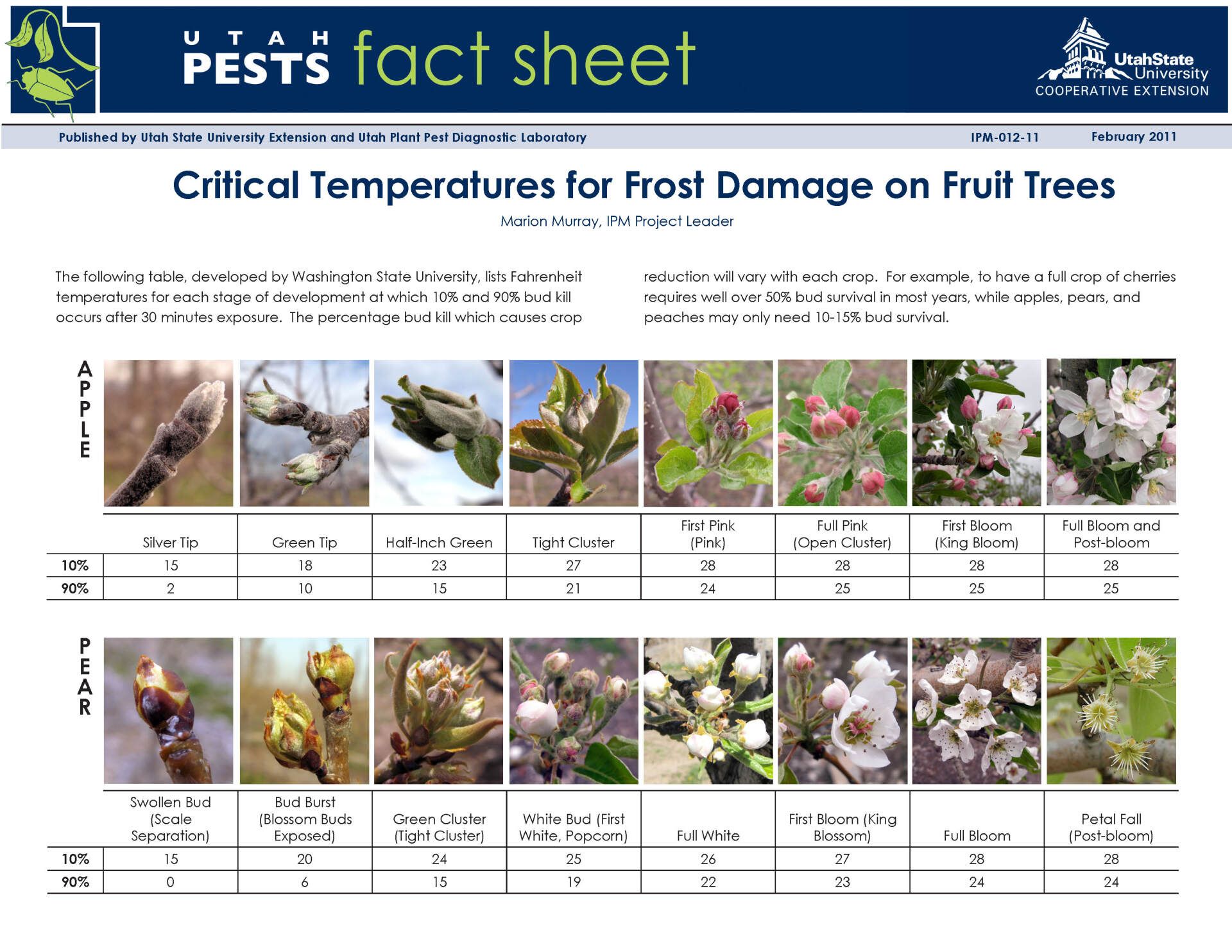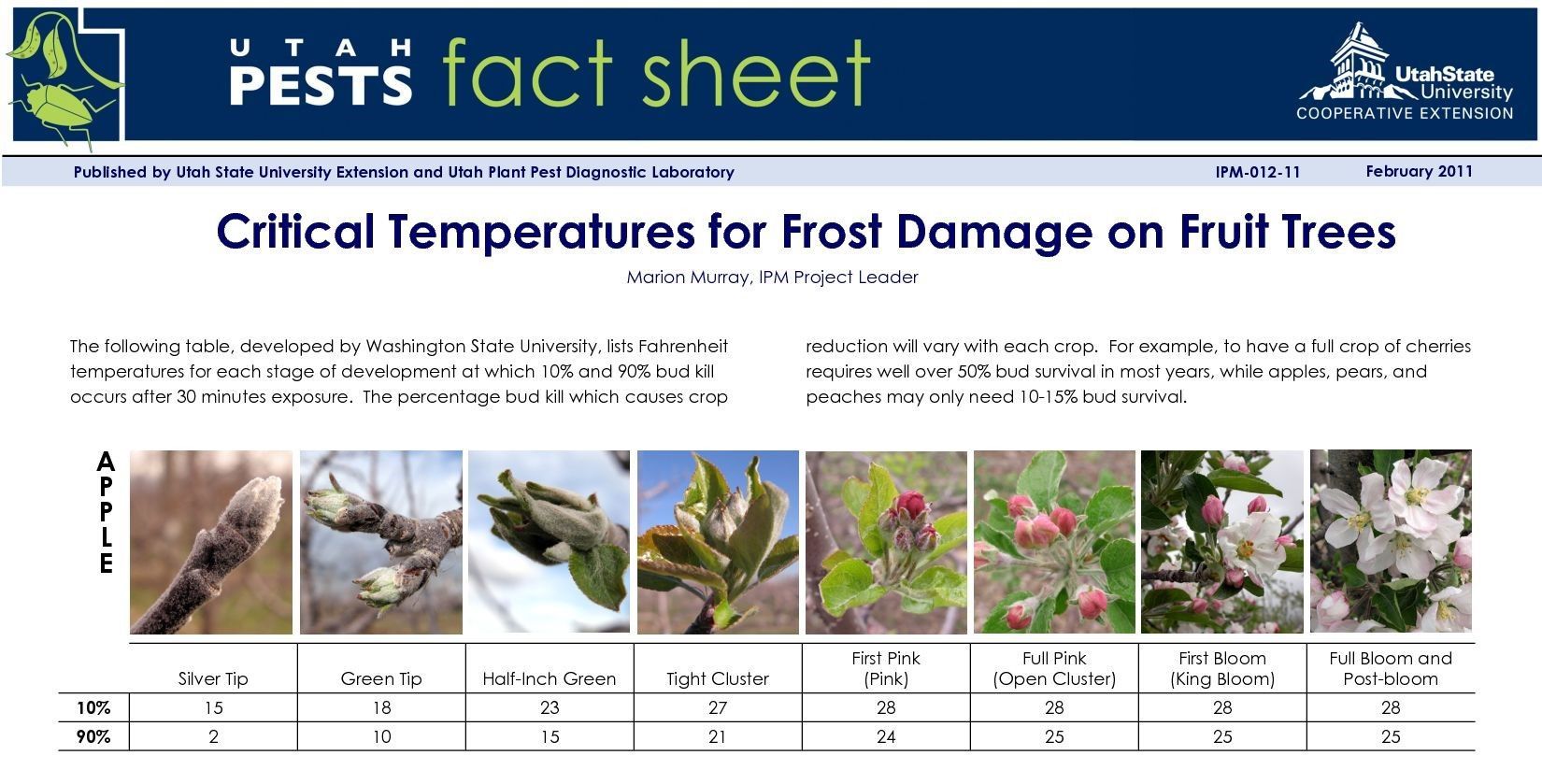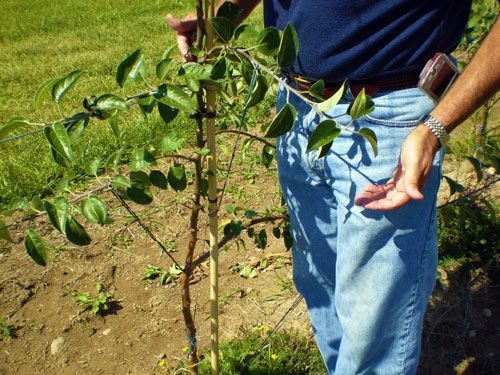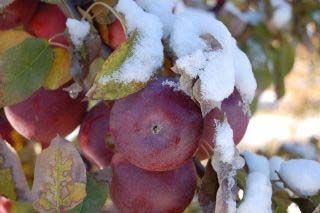Codling Moth Egg Hatch is Underway
Peak Egg Hatch for Codling Moth is Upon Us

To determine when flight begins for codling moth, commercial growers make use of pheromone traps. Once moths have been trapped for two consecutive days in a row, a biofix is set that initiates the beginning of growing-degree-day calculations. We know that at approximately 100 degree days after the biofix date codling moths begin to lay eggs and those eggs begin to hatch at approximately 250 degree days after biofix. And peak egg hatch is approximately 500 to 650 degree days (DD) after biofix. It is this information that aids in the timing of necessary sprays for codling moth so they do not damage fruit and as few sprays as possible are done. Growers wishing to time sprays based on egg development and hatch (larval stage) should make an application of an insecticide at 250 DD (base 50 degrees F) after the first sustained capture of males in the sex pheromone traps. And if that first spray was missed, then another spray can be done at the 500 top 650 DD mark, which is now in the upper Midwest. Here is a Detailed Growing Degree Day Model for Codling Moth. It is important to know that codling moths usually do not fly on nights when the temperature is below about 60 degrees, so if a biofix is set and then the nights turn colder, a new biofix may need to be set when nights warm up to above 60 degrees.

For the home orchardist who does not have the benefit of a weather station or other means to calculate degree days, a simple tree growth stage time table can be followed. Codling moths usually start flying at bloom time or just after bloom time at petal fall and at approximately the same time as plum curculio. Eggs laid by these moths begin to hatch about two weeks after petal fall, depending on the weather. You can apply the first codling moth spray at this time, about two weeks after petal fall, to prevent larvae from entering the fruit. Because most insecticide residues last 7 to 10 days and moths are continuously present throughout the summer, apply a spray every 7 to 10 days to prevent later broods of codling moth larvae from entering apple and pear fruits. If using a natural product like Spinosad or Bt, then spray after every rain due to wash off. Always follow the label directions of any spray you may use.
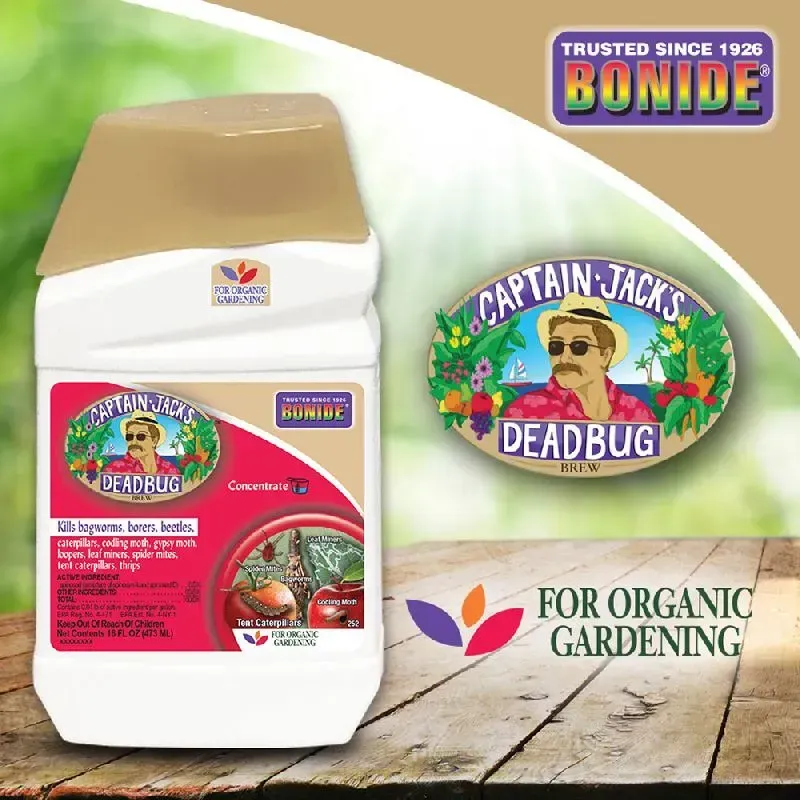
An all natural approach to spraying for codling moth larvae is available in the form of Bonide’s Captain Jack’s Dead Bug Brew. Captain Jack's Deadbug Brew® contains Spinosad (spin-OH-sid), a product first isolated from a naturally occurring soil dwelling bacterium that was collected on a Caribbean island from an abandoned rum distillery. Deadbug Brew® kills bagworms, borers, beetles, caterpillars, codling moth, gypsy moth, loopers, leaf miners, spider mites, tent caterpillars, thrips and more! Use on fruits, vegetables, berries, citrus, grapes, nuts and ornamentals and approved for organic gardening.
Several insecticides can be used for codling moth control including acetmaprid and/or spinosad. Acetamiprid is a soft, conventional control and is available as Ortho Flower, Fruit and Vegetable Insect Killer. This product has been discontinued by Ortho, but is still available in locations like eBay. This is a concentrated product that containing .5% acetamiprid. Acetamiprid is a synthetic organic compound of the family of chemicals that acts as neonicotinoid insecticides. Acetamiprid is a contact, translaminar insecticide for sucking-type insects and can be applied as a foliar spray. Translaminar insecticides are absorbed by leaves and can move through the leaf to the opposite surface they contact. They are not truly systemic and do not move throughout the entire plant. Acetamiprid acts on a broad spectrum of insects, including aphids, thrips, plum curculio, apple maggot, Japanese Beetle and Lepidoptera, especially codling moth. When sprayed in the evening at sunset, it will not harm bees or other beneficial insects once it is dry. Be sure to follow all label directions on the bottle for proper application.
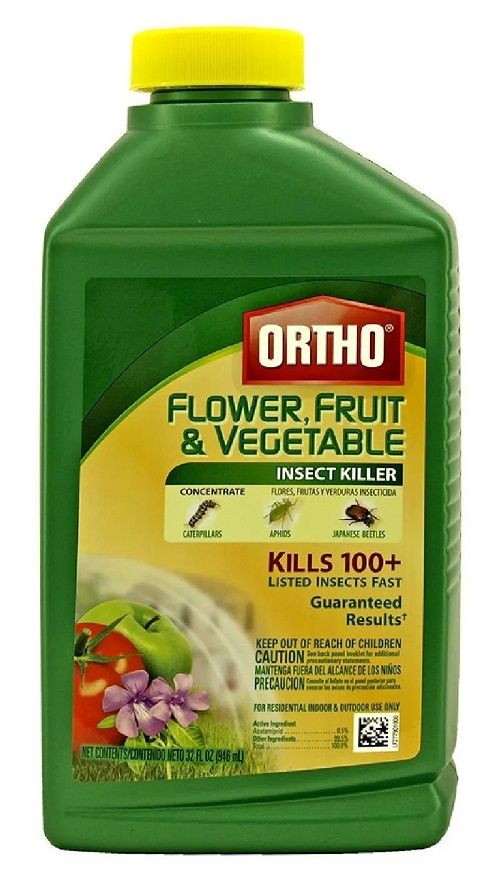
Both of the above products will kill Codling Moth larvae and need to be sprayed just prior to the emergence of the larvae. Typically, after 1" of rain, these sprays will have been washed off and will need to be sprayed again to be effective.
For additional information, see the following fact sheets which are available from local university extension services:
https://ecommons.cornell.edu/bitstream/handle/1813/43086/codling-moth-FS-NYSIPM.pdf
http://extension.psu.edu/plants/tree-fruit/insects-mites/factsheets/codling-moth
This publication contains pesticide recommendations that are subject to change at any time. These recommendations are provided only as a guide. It is always the pesticide applicator's responsibility, by law, to read and follow all current label directions for the specific pesticide being used. Due to constantly changing labels and product registration, some of the recommendations given in this writing may no longer be legal by the time you read them. If any information in these recommendations disagrees with the label, the recommendation must be disregarded. No endorsement is intended for products mentioned, nor is criticism meant for products not mentioned. The author assumes no liability resulting from the use of these recommendations.
Backyard Orchard Management @ Royal Oak Farm Orchard
Backyard Orchard Management @ Royal Oak Farm Orchard is a blog for the home fruit tree grower providing information about fruit tree management, fruit tree pruning & training and Integrated Pest Management from the IPM Specialist and Certified Nurseryman at Royal Oak Farm Orchard, a 22,000 tree apple orchard and agri-tourism operation located in Harvard, Illinois.
Click or tap any title to read that post.

